An Outsider Artist
"Do you think I might be fool enough to run away from heaven if I get there?"
Have you ever wondered where these little bottles came from?
These plastic bottles of honey, shaped in rough approximation of a bear. You see them on the shelves of every grocery store from the Atlantic to the Pacific, on the tables of every greasy spoon, road-side diner, and breakfast joint in every state. My grandfather was a beekeeper for many years before old age and poor health forced him to step back. Some years, he’d bottle his liquid gold in plastic bottles shaped like beehives. Other years, he’d change it up some, and we’d receive a king’s bounty of a dozen large plastic bears, filled to the brim with the labor of his diligent bees.
I was surprised to learn that this bottle was designed by Nathan Lerner.
Born in 1913 to Ukrainian immigrants in Chicago, Lerner’s talent for the visual arts was quickly recognized by his parents and, at age nine, he was enrolled in the Art Institute of Chicago. Starting at eighteen, he’d spend years under the tutelage of a variety of well-respected photographers and designers in Continental Europe, where he’d foster his skills as a photographer - a field in which he’d make a respectable name for himself in the world of high art. In 1945, Lerner would return to Chicago and the Art Institute - then known as the Institute of Design - and serve as both the dean of faculty and students, as well as the head director of the school’s product design workshop. It would be here that he would design the iconic bear-shaped honey bottle. If you ever pushed one of these as a young child -
Or slipped a quarter into one of these -
Or even recently squirted some nasty-ass high fructose corn syrup and tomato paste slop onto a perfectly good plate of fries and ruined them with one of these -
You’ve used one of the products that Nathan Lerner designed.
These revelations were nothing short of shocking to me. I was unaware of Lerner’s contributions not just to the world of art, but his hand in bringing about so many common items that we engage with on a daily basis and often take for granted without ever even considering who might have brought them to life. It’s easy to just assume that squeeze bottles, honey bears, and gumball banks inexplicably spawned themselves out of the ether one day, or had always just kind of existed.
The thing is, I’d heard the name Nathan Lerner before. But I had always been under the impression that he was just a Chicago-area landlord.
At some indistinct point in time - I can’t find a date - Lerner and his wife, Japanese pianist Kiyoko Asai, purchased an apartment building at 851 Webster Avenue in the Lincoln Park neighborhood of Chicago1.
It sounds as if Lerner had lived here for some time prior to acquiring the building, as he claims in his own writings, I saw Henry Darger every day for twenty years. Using other dates that will become pertinent soon, I calculated that this comment indicates that Lerner moved into the building sometime in 1952.
Henry Darger was an eccentric recluse that lived at 851 Webster Avenue. He was such a reserved individual that no one at the property was even sure how to pronounce his last name. He’d lived in a large flat on the top-floor of the building since 1932, back when rent probably only cost a dime, and only left to work as a dishwasher at the Alexian Brothers Hospital, attend mass multiple times a day, or wander the streets of Chicago, where he made a habit of picking up odd bits and pieces he found littering the streets and discarded in trash cans. Lerner stated that he had collected hundreds of empty bottles of Pepto-Bismol, and had a particular penchant for taking broken eye-glasses and repairing them with surgical tape. He would pick up broken rubber bands, which he would repair by tying them together again, and also kept a collection of bricks under his bed for unknown purposes. He also had an obsessive drive to collect as many newspapers as he could, from which he would cut out and clip photos he collected in vast catalogues. Even more clippings would be tacked to his wall and scattered about the floor of his flat. Lerner would only ever see the elderly man shuffling in and out of the building. He would never speak unless spoken to, and, if prompted to converse, he would only ever respond with a polite comment about the weather.
Though he had no visitors outside of the odd few visits from a Catholic priest, Lerner wrote that he and other tenants would often hear the sounds of conversation coming from Darger’s room. Apparently, the old man would converse with himself, conducting two-sided arguments between a variety of characters he would impersonate so impeccably that, at times, the other residents were convinced that there were multiple people in his flat. There never was.
He claimed to be Brazilian, too. Apparently, Lerner once held a birthday party for the old man, at which he sang what he claimed to be a Portuguese marching song often sang by Brazilian soldiers. No one present spoke Portuguese, so, as Lerner writes, We were all convinced. This professed Brazilian heritage is, apparently, why he claimed to rarely bathe.
Lerner wrote the following pertaining to the old man’s presence;
He was such an institution at 851 Webster Avenue that, when he could no longer afford rent, the landlords before Lerner would only charge him half of what he was supposed to owe. Lerner kept this tradition in place.
In 1969, while on one of his usual ramblings around the city, Darger would be struck by a vehicle. Already in poor health with weak legs, the injuries sustained to his hip would prove debilitating. Living in a flat on the third story of the building, Darger’s lame knees became an increasing problem. Lerner writes that the wallpaper along the stairway was worn and rubbed away by Darger’s hand as he used it to brace himself while he dragged himself up the steps.
In 1972, shortly after Lerner and his wife acquired the building, Darger asked him to make arrangements for him to be moved to a Catholic nursing home. The daily trek up the staircase had become too much for him. He requested that it be Saint Augustine’s Home for the Aged, operated by the Little Sisters of the Poor. Seeing the physical anguish the old man suffered, Lerner conceded. Kiyoko Lerner walked him to the home and, after almost forty years at 851 Webster Avenue, Darger departed for the last time. He took nothing with him save the clothes on his back, including a well-worn and tattered army jacket.
Lerner and his wife would visit Darger at Saint Augustine’s Home for the Aged. Over the years, they’d developed an affection for the eccentric old man. Though he was never too expressive of it, it seemed he, too, had come to care for them as well. Lerner recalled that, around Christmas time, Darger refused to see him when he came to visit, but did slip a card under the door for him. It was a Valentine’s Day card he’d found in the trash. He’d scratched out the bits about Valentine’s and scribbled in, Marry [Sic] Christmas.
Darger’s mental and physical health deteriorated rapidly. Lerner writes that, near the end, he ceased all verbal communication and would simply sit in a corner of the homes’ public room, alone, motionless, and silent. His memory began to fade to the point that he could no longer recognize his old neighbors from 851 Webster Avenue, who would sometimes come to visit him.
Days after Darger’s departure from 851 Webster Avenue, Lerner had asked another resident, Dave Berglund, to assist him in clearing out the considerable clutter from Darger’s flat. The two men spent days clearing out what they considered to be trash, collected over the span of the old man’s lifetime. Hidden among the hoard, the two men were astonished by what they found. They showed the other tenants, who were just as surprised.
Near the end of his life, Berglund would visit Darger at Saint Augustine’s. There, he’d ask him a simple question - Why did you never tell anyone?
It was then that Darger uttered what may have been the last words he would ever speak. To the question, he replied with three simple, yet haunting, words:
Too late now.
Henry Darger would pass days later on April 13th, 1973, only a day after his eighty-first birthday.
But Darger’s story would not end in Saint Augustine’s Home that day. In fact, it could be said that it was on that day that Darger’s story would truly begin.
On April 12th of 1892, Henry Darger was born in Chicago, Illinois to parents Rosa Darger and a German immigrant and tailor, Henry Darger Senior. Four years later, they would have a daughter, as well. Days afterwards, Rosa would pass from a septic infection. Darger Senior would make the difficult decision to give his daughter up for adoption. Darger Junior would never meet his younger sister.
Darger did, however, continue to live with his father. It was apparent that Darger was remarkably intelligent, and his father would teach him how to read with the aid of newspapers before he was three years old. When Darger did begin school, his abnormal intelligence and pre-school education from his father earned him a place in the third grade rather than the first.
When Darger was eight, his father would lose the ability to use his legs. Lame and increasingly mentally unwell, he was unable to care for the boy. Darger would be put in the care of Mission of Our Lady of Mercy Catholic orphanage and boys home, while Darger Senior would live the brief remainder of his life in Saint Augustine’s Home for the Aged - the very same nursing home his son would later die in.
It was around this time that Darger began to exhibit the troubles that would plague him for the remainder of his life. He was nicknamed Crazy by the other students for his frequent outbursts in class, in which he would disrupt lessons by making strange noises and, at times, antagonize his classmates, sometimes violently. He recounted in later writings that his first memories were of throwing dirt in a little girl's eyes.
The school administration had Darger submitted for a psychiatric evaluation, in which doctor’s would diagnose him unstable from copious amounts of self-abuse. At the time, self-abuse was a polite euphemism for, er… well, let’s just say it’s what the kids today would call gooning2.

Was Darger actually a based sigma-male goonmaxxer? It’s probably not worth speculating on. It is worth noting that self-abuse was often linked to and cited as a cause, if not a symptom, of homosexuality at the time, as well. Keep that in mind.
Darger himself, in later writings, would place the blame for his behavior on the teachers, who he claimed he could see through their lies and, as a result, felt compelled to be a self-described smart aleck in return.
Eventually, the school would tire of his smart aleck-ing, and Darger would be transferred to the Asylum for Feeble-Minded Children in Lincoln, Illinois, far to the south from his native Chicago. Darger was only twelve years old.
The Asylum was notorious in the state of Illinois for its poor living standards. Over-crowding was common. Corruption among the staff was rampant. Public scandals were frequent, as were allegations of neglect and abuse, both physical and sexual, all of which were corroborated by Darger in his personal recollections of his time there.
But, this was the early 1900’s - a time when orphans were a dime a dozen and nobody really cared what happened to them, so nothing was ever done to ameliorate the situation. It was something of an open secret in Lincoln that the Asylum was using the surplus of children as a source of labor, which had only recently been outlawed by the United States Bureau of Labor. Given that the city of Lincoln had quite literally lobbied for the Asylum to be built there by the state as an economic boon for the town, it's safe to say that no one in a position to do anything about the exploitation of children there was interested in fixing it.
Darger himself would be subjected to hard labor on the Asylum’s farm, where violence inflicted upon the children by supervisors was both common and encouraged. In later writings, he would refer to the place as the children’s nuthouse. During this time, historians of Darger believe he was subjected to sexual abuse as well as physical, as neither was uncommon in such facilities at the time.
In 1908, Darger would receive news that his father had passed, officially leaving him an orphan rather than just a feeble-minded boy. Not once in eight years had he had the opportunity to visit him. Darger writes;
Spurred by despair, Darger attempted to escape the Asylum by box car, only to be caught before reaching the rail tracks and returned by what he called the school’s cowboy. The following year, he’d make another escape, only to turn himself into the police shortly after and return.
Despite the abuse he suffered at the Asylum, Darger would reflect on his time there fondly in his later autobiographical writings. He claimed that there were, in his own words, good times, and that he enjoyed the work he performed at what he would call the state farm.
Again, in 1909, Darger would make a third, final, and successful escape with another boy from the Asylum with the aid of a local German farmer, who drove them to Decatur, Illinois. From there, Darger walked to Chicago alone. Once there, he sought out his Godmother, who’s identity is unknown. With her help, he was able to secure work as a janitor at Saint Joseph’s Hospital at the age of seventeen. When the nuns there discovered that he had fled the Asylum, he pleaded with them not to return him. Despite maintaining a contentious relationship with them, they agreed to allow him to stay, as well as live on the hospital’s premises. God, after all, does not look kindly upon narcs.
Strangely, Darger would later regret this decision not to return to the Asylum. Perhaps it may have been nostalgia, or maybe he found life in Chicago scrubbing floors under the purview of strict nuns disagreeable, but Darger wrote the following on his thoughts. These, in my opinion, are the most tragic - and telling - words he penned, speaking to his troubled life.
Do you think I might be fool enough to run away from Heaven if I get there?
Past this point, Darger’s life settled into a comfortable routine that changed very little over the years. He would remain in Chicago for the entirety of his life, with the only brief exception. Come 1917, there was a little dust-up going on across the Atlantic on the European continent. Nothing major, really, but things weren’t going well for America’s business interests friends in England, so a draft was issued in May of that year to build-up a fighting force to send over and give the naughty Germans a stern talking to.
Many were excited for the opportunity to give those rascally Krauts a firm swat on their Tuetonic bottoms.
But Henry Darger wasn’t. As a young, able-bodied young man, he was called up to do his civic duty and die in a muddy ditch somewhere in France because, um… reasons. He was ordered to Camp Logan, outside of Houston, which he didn’t care for much, since Houston is kind of a difficult place to like. Especially before the advent of air conditioning.

Fortunately for Darger, his time in the open-air sauna of South-East Texas would be brief; he would be discharged from the service for poor eyesight before ever stepping foot in Europe, and presumably before Camp Logan became the epicenter of an honest-to-God mutiny and race riot. He admits in his writings that he exaggerated his eyesight problems in order to secure his dismissal.
When Darger departed, he would take only an army jacket with him. He would regularly wear this jacket for the rest of his life.
Upon his return to Chicago, he’d resume his old job at the hospital and work increasingly odd hours that extended late into the night. The already reserved Darger would become intensely reclusive. Throughout his life, it seems that he only had one man he considered a friend. When exactly Henry Darger met the Luxembourgian immigrant by the name of William Schloeder, no one is certain, but it seems to have been sometime early into his permanent relocation back to Chicago.
Little is known of Schloeder outside of his relationship with Darger. Apparently, the two men were quite close. The two would regularly visit the Riverside Amusement Park in Chicago, where Darger admitted in his writing, I willingly did all the spending. Schloeder, in turn, would often bring Darger to his home, where he lived with his mothers and sisters. Naturally, two homies being tight like this inspire rumors of homosexuality, because friendless losers and gooners don’t comprehend the concept of philia.
Also, remember what I said about self-abuse earlier? That’s another reason people suspect they might have been more than friends.
There is no evidence to support this, outside of the two men spending lots of time together and Darger referring to Schloeder as his special friend. But, in all fairness, there’s no evidence to the contrary, either.
Schloeder would relocate to, of all places, Texas, though, when he did exactly is uncertain. Some sources say he moved in the mid-30’s. Others say that he left in the late 50’s. Regardless, when he left, Darger would lose his only friend. Despite being a country apart, the two men would regularly write one another and maintain their friendship until Schloeder’s passing in 1959.
Before this, however, Darger would depart from Saint Joseph’s in 1922 after his relationship with a particularly disagreeable nun deteriorated beyond salvage. He identified her as one Sister DePaul, who would criticize his janitorial performance and, as he claimed, harass him while he worked. He would find work at Grant Hospital as a dishwasher in the kitchen and relocate to an apartment at 1305 Webster Avenue.
There, Darger would begin to suspect the landlord was erecting stills for the purpose of producing bootleg liquor. Given that this was during the thick of Prohibition, one might assume that Darger feared that, were the landlord to be caught, he, too, would be arrested on charges of collusion. In actuality, he feared that the imagined still was located under his flat and explode while he was sleeping. While there was no evidence to support this paranoid delusion, Darger relocated to another apartment building two blocks away at 851 Webster Avenue; the same place he’d remain for the lion’s share of his life.
At the time, the building was owned by a Chicago police captain by the name of Walter Gehr. Gehr was unbothered by Darger’s growing eccentricities. Recognizing the army jacket Darger wore, he mistakenly believed that the man was just one of thousands of the traumatized, shell-shocked veterans of the first World War trying to make ends meet.
Gehr’s daughter, Mary Catherine O’Donnell, would later speak about growing up in the same building as Darger. She claimed that, before he entered the bathroom that he shared with other tenants, he would ritualistically chant the ABC’s, and that she and her brother would sit outside his door while he engaged in the one-sided, multi-voiced debates in his room. She said they would listen to them as if they were a radio drama. They would also sneak into his room while he was away. They’d rifle through his collections of junk, play with the toys he had found and repaired, but, more than anything, they would marvel at the pictures on his walls. As it turned out, Darger didn’t just sit in his room and fuss with broken rubber bands or argue with himself - he’d taken up the hobby of painting.
Taped to his walls were expansive drawings made by Darger’s own hand, the subjects traced from pictures he’d snipped out of newspaper and adorned with elaborate watercolors, some pieces made from sheets of paper held together with tape that stretched as wide as three-feet.
Unbeknownst to them, he wasn’t just a painter - he was also a writer. And a prolific one at that.
Over forty years later, when Nathan Lerner and Dave Berglund would begin to remove a lifetime of collected trinkets, newspaper, and junk hoarded by Darger, they uncovered his writings.
All thirty thousand plus pages of them.
No one is entirely certain when Henry Darger began to write, but historians who have dedicated their careers to documenting his work and uncovering his history estimate that he first began to put pen to paper around 1910 or 1912. It was around this time, when he was either eighteen or twenty, that Darger began to write his first novel by hand. In 1916, he would begin to use a type-writer. It wouldn’t be until 1932 that he began to bind the writings into massive tomes by hand. By the end of this arduous project, this first epic story would consist of a head-spinning 15,145 pages divided among fifteen volumes, replete with 350 hand-drawn, water-colored illustrations. These illustrations would consist of paper taken from coloring books and magazines, taped together into sprawling scrolls, the longest of which would measure thirty-five feet in length. Hampered by his limited income, Darger would resort to using any materials he could find to create his art. Many of the pencils, paints, and papers he used were found were discarded, rummaged out of trash bins.
Darger would title the story, The Story of the Vivian Girls, in What is Known as the Realms of the Unreal, of the Glandeco-Angelinian War Storm Caused by the Child Slave Rebellion.
I have not read… well, we’ll just call it, as most do, The Realms of the Unreal. So far as I’m aware, you can’t read it. It’s never been transcribed or released in a format accessible to the public. It has been picked over, documented, and obsessively catalogued by scholars and art historians, but I have never been able to find anything more than sparse excerpts of the text. Truthfully, even if I was gifted a transcribed copy of The Realms of the Unreal, I’m not sure when I’d find the time to parse through over fifteen thousand pages of dense, single-spaced text in its entirety.
From what knowledge the art world’s gatekeepers in their ivory towers have deigned to release to us plebs, we know that the story chiefly focuses on the seven daughters of a man named Robert Vivian. These girls are paragons of virtue, devout Catholics (like Darger himself), and princesses of a fictional, nigh-utopian country called Abbieannia. Their idyllic life in this peaceful nation is brought to an abrupt end with an invasion by a force called the Glandelinians - a warlike and staunchly atheistic nation that quickly conquer the virtuous Abbieannians and set their country to the torch.
The Glandelinians set about murdering the adults of Abbieannia and enslaving the children, including the Vivian girls.
Oh, and, somewhere in the middle of it all is a race of fantastical creatures called the Blengigomeneans - immense winged and horned beings not unlike dragons that often disguise themselves as humans and, while suspicious of humanity due to the atrocities committed by the Glandelinians, are ultimately sympathetic and benevolent towards the oppressed children of Abbieannia.
However, the Vivian girls stage a rebellion of the enslaved children with the assistance of an illustrious and courageous general by the name of… can you guess?
Henry Darger.
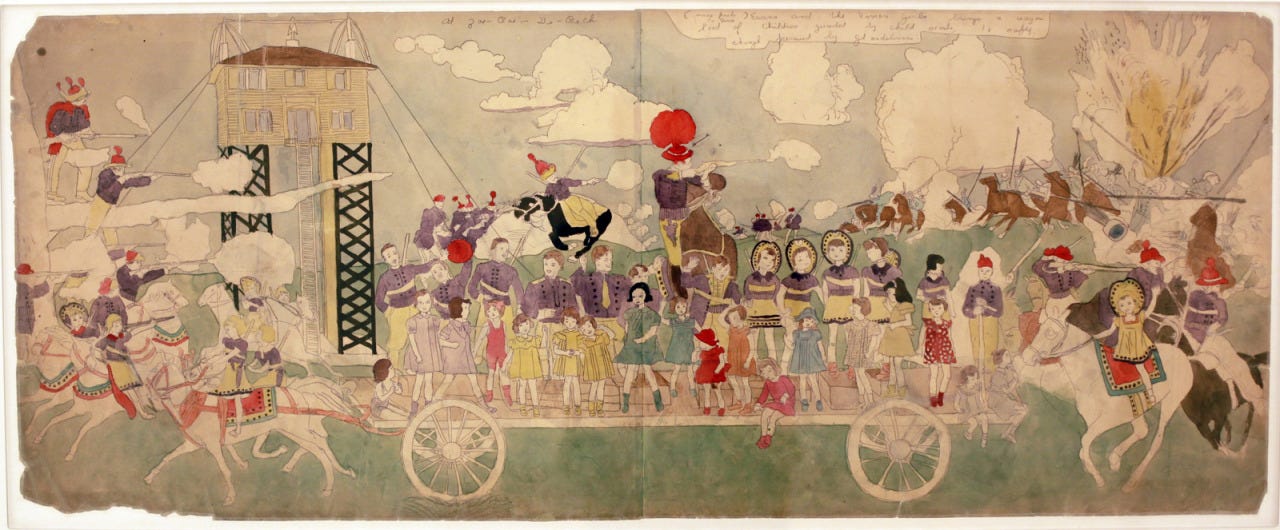
In the text, Darger posits himself as a foreign general from the mystical and far-off land of America, who came to liberate and protect the of children of Abbieannia. His friend, William Schloeder, would also play a prominent role in the narrative as the leader of a secret society dubbed Gemini, which exists solely to protect innocent children from the predations of the ruthless Glandelinians. The Glandelinians, in turn, were led by the wicked John Manley - modeled after a childhood bully who had antagonized Darger in his youth.
Having no formal education or training in art, Darger would use pictures taken from magazines, newspapers, and advertisements that he found as reference material, which comprised his massive stash of clippings and explained his feverish hoarding of discarded print work. At times, he would take the images and simply glue or tape them into the drawings. This eclectic and mismatched source material would result in a vast disparity of style mixed together in single pieces. Others he would place under the paper and trace over. The resulting pieces are elaborate and complex to the point of appearing baroque, and, at times, psychedelic and surreal in nature with their blend of contrasting styles and hazy, dream-like watercolors.
Some of these source materials Darger would use more than others. Constantly folding and handling of them would result in the images wearing out over time. In his writings, he would express great frustration when speaking of his favorite pictures becoming unusable. Other times, he would find pictures that he wanted to use as a subject, but were too small for the intended purposes. So dedicated was he to his craft that he would take these images and use his limited income to purchase enlargements from copy stores. Over time, the walls of his apartment would become overtaken with these reference materials and his own drawings.
This unusual source of both reference material and inspiration would manifest in odd ways throughout the text of The Realms of the Unreal. It was not a war story. Not when Darger began it.
The earliest volumes of The Realms of the Unreal are mostly dedicated to explaining the world in which it takes place, the Vivian girls, and fantastical adventures that serve as classic morality tales. The Glandelinians were present, but their incursions into Abbieannia were always defeated and their forces humiliated by the virtuous princesses.
This would change dramatically, and it was altered by, of all things, a single picture taken from a discarded newspaper.
Elsie Paroubek was born in Chicago to Czech immigrants in 1906. In April of 1911, at age five, she would leave home to visit her aunt, who only lived a block away. A month later, her body would be found in a ditch in the city of Lockport, some thirty miles away from Chicago. She had been suffocated to death.
The disappearance, the murder, and the ensuing investigation were something of a media spectacle in Chicago. It was as well documented as it was well publicized. Darger would come across this picture of Paroubek in a newspaper, and clip it for later use.
Though there is no evidence that he was particularly inspired by the story of Paroubek’s disappearance, as someone who harbored deep and intense emotions on the subject of child abuse, one can only assume that Darger was distraught by the news. He would become more so when, for unknown reasons, his copy of the photo of Elsie Paroubek was lost. It is unknown how, or even if, Paroubek’s photo was incorporated into the illustrations of The Realms of the Unreal, but it’s loss would irrevocably change not just the course of Darger’s fictional story, but his entire life.
The photo of Paroubek was one of thousands of pieces of reference material that Darger had collected. It stands to reason that, in all likelihood, it was simply lost among the clutter of his apartment. Darger believed that it was one of several items that was stolen from his work locker. In his journal, Darger wrote that the loss of the photo was a “huge disaster and calamity" of his loss "will never be atoned for", but "shall be avenged to the uttermost limit”3.
Despite his best efforts to locate the newspaper he had sourced the photo from in the public archives, Darger could never track down another copy. In desperation, Darger erected a religious shrine in his apartment, to which he would extensively pray for the return of the photo. When his prayers went unanswered, he swore to the divine that, were his demands not met, there would grave ramifications.
Again, his pleas were only met with silence.
Darger retaliated against this perceived slight in the only way he knew how - by taking out his anger in The Realms of the Unreal.
The war between the Abbieannians and the Glandelinians took a turn for the worst with the assassination of the character Annie Aronburg, who served as Darger’s stand-in for Elsie Paroubek within the narrative, who he had imagined as a general in the army of rebelling child slaves. Darger’s fictional counterpart, once the gallant defender of children and Christianity, turned his back on Abbieannia and crossed enemy lines to join John Manley, citing God’s refusal to answer his prayers as his reasoning. This dark shift in the story was brought to a brief pause when Darger was drafted and sent to Camp Logan, where he could no longer be able to work on the story. Upon his return, his experiences in the camp had hardened his heart even more.
I could explain the headspace he was in. Or I could just show you this picture of little girls being led by soldiers to the gallows.
Charming, right?
The images and accompanying text, depicting and describing the children being tortured in obscene ways, coincides with his own withdrawal from the church. He depicted entire spreads of children being shot, stabbed, hung, and even crucified by Glandelinian soldiers, often in grotesque detail.
This abandonment of his faith was not only spurred by his inability to find the photo of Elsie Paroubek, but his own failed attempts to adopt a child of his own. Darger made many attempts to adopt an orphan from the Catholic Church. In his diaries, he wrote extensively of his desire to start a family of his own, but, without a spouse, his low income, and the stain of his time in the Asylum for self-abuse, his efforts met with repeated failure. This, too, he blamed on God’s silence rather than his own personal limitations, and believed that his threats to turn the tide against the Christians in the fictional wars of The Realms of the Unreal were responsible.
As the work began to consume him, it’s obvious that the line between reality and fiction was becoming increasingly thin for Darger. Whether or not Darger genuinely believed that he was influencing and documenting the events of a parallel world of some sort are widely speculated on.
Then, as suddenly as he’d turned his back on God - Darger returned to the church. He cited reading a newspaper comic in which a man was sent to Hell for his transgressions against the divine, which properly disturbed the blaspheming Darger. In his writings, he wrote that he realized that the disappearance of Elsie Paroubek’s photo was not a punishment, but a test of faith. And one that he had failed miserably.
In The Realms of the Unreal, Darger’s return to the faith was paralleled by his fictional counterpart’s return to the Abbieannians and his profuse apologies to the Vivian girls and their allies for having abandoned them.
When Darger finished The Realms of the Unreal is uncertain, but, after decades of toiling over the story, it finally came to a close. Darger gave the story two conclusions, both written on opposite sides of the same sheet of paper. In one, the Vivian girls, Darger, the Gemini Society, and the forces of Christianity defeat the Glandelinians and reclaim Abbieannia, ushering in a new golden age of freedom, prosperity, and Catholicism for all.
In the other, John Manley and the Glandelinians finally put down the last child rebels, the Vivian girls are left to dangle from the ends of ropes, and the country of Abbiennia is subsumed in eternal darkness.
Though The Realms of the Unreal had concluded, it did not bring to an end the adventures of the Vivian girls. For his next endeavor, in 1939, Darger would begin a sequel, titled, Crazy House: Further Adventures of the Vivian Girls in Chicago. This sequel implies that the [Good End] of The Realms of the Unreal was the true canon conclusion. In this story, Darger brings the Vivian girls and their one brother, who I guess no one knew about up to that point, to his exotic and foreign homeland of the Windy City - Chicago. There, they discover a house possessed by demons. It is, as you most likely guessed from the title, a crazy house. You definitely get what you came for with this one, it seems.
The Vivian girls and Darger do battle with the evil forces within the house, and, apparently, it just kind of ends with no real conclusion. Unlike the overly long-winded The Realms of the Unreal, Crazy House clocks in at a much more modest 8,500 handwritten pages, which makes it some good light reading before you go to bed, or perhaps are sitting on the john.
This, unfortunately, did bring about the inevitable end of the Vivian girls’ absurdist, fantastical, and at times gory and grotesque adventures, both in the whimsical Realms of the Unreal and in Chicago.
Darger appears to have made an attempt to venture into nonfiction when, in 1957, he began to keep a daily journal in which he would catalogue in discuss the weather. He would continue to document the weather in this journal for ten years to the very day, and gave it the characteristically long name of, The Book of Weather Reports on Temperatures, Fair Cloudy to Clear Skies, Snow, Rain, or Summer Storms, and Winter Snows, and Big Blizzards, also the “Low” Tempertures [sic] of Severe cold Waves, and Hot Spells of Summer.
And you guys think I’m verbose.
After his retirement from his janitorial job at the hospital in 1963, Darger would begin to write his autobiography. In a surprising turn, he gave the work an uncharacteristically short tile of, The History of My Life. Given his reclusive nature, this source is where most of our knowledge pertaining to Darger’s life is drawn from.
Also, at some point, he wrote a 4,627 page long piece of fiction detailing the carnage wreaked by a fictional and seemingly sentient tornado of ill-intent dubbed Sweetie Pie. Sources seem conflicted about whether or not this was a nonsensical extension of his autobiography, his weather journal, or if it was a standalone story altogether, but I thought it was funny and worth mentioning.
These projects bring us to the conclusion of Darger’s life, and Lerner and Berglund’s discovery of his work while cleaning out his apartment. Lerner, being an artist himself, was enthralled by the treasure trove of art and literature that the enigmatic and lonely old man had left behind. With no surviving relatives to claim his estate, Lerner and his wife took it upon themselves to publicize Darger’s work and share it with the world. Nathan Lerner passed in 1997, leaving his wife, Kiyoko, as the sole inheritor of both his and Darger’s work. To Kiyoko Lerner’s credit, she worked hard to establish a permanent Darger exhibit at the Chicago-based museum, Intuit: The Center for Intuitive and Outsider Art. There, one can find a replica of Darger’s room, meticulously recreated to resemble what it looked like during his life, as well as a display of some of his selected work. Other exhibits featuring his work have been displayed in museums across the world, off and on, even being shown besides painting done by illustrious and respected like Francisco Goya.
And, for as petty as I sounded when I was talking about the fact that his work is largely inaccessible to the public… I do understand why it isn’t. Not only is there just too much of it, but the materials he used to make them were, as I described, not of the highest quality. Even at the time, most of it was trash. The surviving copies are simply too fragile to be displayed, and only accredited curators and scholars of art are allowed to handle them in highly controlled environments. Only a precious few pieces made by Darger have been auctioned to private collectors. The most expensive of these fetched a tidy sum of $750,000.00 - the highest price paid for a work by a self-taught, outsider artist.
The story of Henry Darger is one that has fascinated me since I first learned of it. Whenever I revisit it, I always find myself drawn to the question I opened this article with, posed by Dave Berglund to an ailing Henry Darger - Why did you never tell anyone?
We will never know Darger’s reason for not sharing his work. Whatever they were, I doubt there was just one defining factor.
I can’t help but imagine that, being a lowly janitor and dishwasher, Darger didn’t have the highest opinion of himself, and never thought that his works would be respected or admired. Not by the public, and certainly not by the mainstream art community. There’s an argument to be made that if it hadn’t been Nathan Lerner, of all people - a very well respected and well-known individual among the movers and shakers in the world of high art - that Darger’s work would have ever been exposed, let alone taken seriously or regarded as anything other than the mad ramblings of a reclusive lunatic.
I also think that Darger’s work was intensely personal and private.
In that way, I think its fitting that Darger’s work was featured alongside those of Goya. In the last years of his life, wracked by poor health, increasing deafness, and mental instability, Goya turned his own home into a canvas when he painted the thirteen infamous Black Paintings on the walls. None of the Black Paintings were ever given official names. He never intended for the paintings to be seen or ever leave his home. The only reason they were ever found was because Goya was forced to leave his native Spain and, in turn, his home, due to political instability and possible state persecution.
The subjects of these paintings are dark, disturbing, and macabre. What they meant to portray is a secret Goya took to his grave. Whatever his reason for scrawling them onto the walls of his own home, they are undeniably deeply personal and uncomfortable reflections of his paranoia, anxiety, and deteriorating mental health.
In much the same way, Darger’s works are an intensely personal reflection of his tragic life, trauma, and damaged psyche. So much of it is defined by his own personal war with the divine, so much of it reflects his deteriorating mental state, and it’s all wrapped in his own personal idiosyncrasies, eccentricities, and fascinations, that I have to wonder whether or not he ever would have wanted anyone to see it.
Much of it features children - in particular little girls - either frolicking in the nude throughout bucolic settings, or being antagonized, tortured, and their short lives ending in horrific fashions by grown men.
Even Darger, eccentric as he was, had to understand that this was not material the public would readily accept. Even today, his work is controversial. While he is undoubtedly the most famous - or perhaps infamous - outsider artist to ever put pen to paper, popular opinion on him as a person is split. For every professional art critic who reacted to his art with fascination upon its display, there were just as many who regarded it with disgust. When Lerner first displayed his art, it was a popular opinion in the scholarly circles of high art that he was a child murderer who had been very good at covering his tracks.
Some believe he was a misunderstood and deeply troubled man who’s fractured mental state manifested in his art. Others believe he was an unhinged psychopath who’s depictions of young children was a sign of an unhealthy interest in minors. One of the most polarizing features of his art that is difficult to avoid commenting on is the frequency of nudity in his works. Often times, children are depicted with no genitalia at all, but when they are, they are always shown to have male genitalia. Some speculate this was a latent manifestation of homosexuality. Others believe that Darger’s conviction that only men were capable of waging war - something he wrote often of in his journal - resulted in him outfitting female characters with the, er… proper equipment for violence, shall we say.
I won’t deny that it is, in my opinion, both unsettling and disturbing, but I don’t actually think that Darger had the inclinations that some believe that he did. I do firmly believe that Darger’s affection for and fervent desire to protect children did not stem from sexual attraction.
Darger kept rather comprehensive diaries and journals to which he committed his thoughts. Diaries and journals that he never had any reason to believe anyone aside from himself would see and therefor had no reason to hold back anything. I believe if he had any inclinations in that direction, it would have come up. So far as I know, with what’s publicly known of Darger’s work and personal writings, it doesn’t. And if the scholars who did read through the entirety of his works did find any indication of such perversions? They’d probably make note of it.
I believe Darger’s fascination with childhood, purity, and innocence is a misguided but, ultimately, innocuous. I think it comes from the fact that, for the most part… he didn’t have those things. His comfortable childhood effectively ended at four years old with the death of his mother. Any semblance of a normal upbringing was shattered when his father was committed to Saint Augustine’s. He romanticized these things because he never had it, and I think his desire to see that no other child had such misfortunes befall them was not disingenuous.
I think it’s also in part because, despite being a grown man while writing these works, he was mentally a child. It is verifiable that Darger suffered extreme abuse throughout his childhood at the Asylum. In his writings, he expresses that the purest and most sacred thing in the world is the innocence of childhood, and the most grave and egregious sin is to steal it away. His own traumatic childhood, marred by loss and abuse, stunted his emotional development. For as long as he lived, he was, mentally, a child. Lerner even says as much in his own recollection of the man, stating that he was childlike in his actions and ways. Darger even says it himself in his diaries:
I hated to see the day come when I will be grown up. I never wanted to. I wished to be young always.
I say none of this to defend Darger. As I said, his drawings and the material of his writing are often lurid and gratuitous to the point of being disturbing.
But, ever since I was introduced to Darger, I found myself morbidly fascinated by his works. Regardless of their quality, regardless of their content and what you may think of it, they are nothing if not unique and almost uncomfortably genuine. Art like that of Darger - art made by one person, bespoke to one person - tends to grip me in that way. It’s raw, it’s honest, and it’s often unflattering, as it was not made with any regard for an audience outside of one single individual.
It’s the same reason I find so much amateur art on sites like Pixiv and DeviantArt so enthralling. A simple search of either of those sites will present you with scads of no-name, anonymous artists with galleries full of amateur works, all made by the artist, for the artist. It’s not uncommon to stumble across an account with quite literally thousands of submissions, none which have more than a handful of views, and none of which are even objectively good, but represent something to the person who’s been making and uploading them. They don’t really care if anyone sees them. They aren’t making them for anyone else to see. If someone happens to find them and like them, that’s great, but fame, accolades, clout, and mainstream success is not what they’re after; they’re simply doing it for love of the craft and to satisfy some latent human need that I believe exists within all of us to create. It’s self-expression in the most pure form.
I’m not entirely sure why possesses some of these individuals to express themselves in such a way. I’m not always certain what exactly they’re trying to say, or why they even feel the need to say it. Often times, I’m not sure if they even should be expressing themselves4, or if what they’re expressing is worth listening to.
But that’s kind of the fun of it. If only because it’s so fucking bizarre.
There’s a certain type of beauty to it, though. There’s something admirable about the amateur creator, moved to pick up a pencil or pen and put it to paper for no other reason than their own self-satisfaction. There’s an honesty to it that can’t be replicated by the Design-By-Committee media made to be consumed by a mass audience churned out by big entertainment conglomerates. And, again - that honesty may not be beautiful. But it is always interesting.
Sometimes, this interest bespoke to the artist speaks to a wider audience. Clearly, Darger’s works, unsettling and strange as they were, captured the imagination of the wider world of art to the point that he’s become something of a folk legend.
Another example is the Japanese independent game developer ZUN, who has been completely transparent about the fact that the immense success of his video game series, The Touhou Project - a series he’s been making almost entirely by himself since 1996 with over twenty-plus installments - is tertiary to the fact that he enjoys the video games he makes. In numerous interviews, he’s stated that if no one played his games, he’d still make them, because there will always be one person who does - himself.
That kind of personal integrity, in my opinion, is one that every artist should strive for. Every artist, regardless of what medium they work in, should always work to please one person, and one person only. The only audience that really matters at the end of the day: themselves. In my experience, it doesn’t matter how much success one’s endeavors meet with the wider world. There will always be one happy customer at the end of the day.
There’s one individual who Darger reminds me of more than any other. You’re probably going to laugh when I tell you who this person is. Ridiculous as it sounds, I think they might legitimately be the second most well-known outsider artist behind Darger. In fact, I think there’s a good argument to be made that, with the rise of the internet, they may be the most well-known outsider artist, bar none. Most would probably not consider them an outsider artist. To consider them a proper artist at all is almost laughably absurd.
But, they are. And if you take the textbook definition of an outsider artist, they fit the bill. Their work will never be displayed in galleries of high art. Their name will never be uttered in the same sentences as the names of the august and esteemed old masters without the quantifier of not being somewhere in the mix. And, if they ever do find their work displayed in the hallowed halls of the Louvre, the Metropolitan, or the National Gallery… well, let’s just say something went terribly, horribly wrong, because, when I see Darger’s art, I can’t help but think of this individual. Their story is like Darger’s in many ways. Isolation is a common theme. The line between eccentricity and mental illness is thin. Both are disturbing in their own unique ways.
It is, in my opinion, quite possibly the most interesting story to ever be told. It is, in my opinion, quite possibly one that never needed to be told.
And it all began with one, simple line of text:
Go! Sonichu! Go out and zap the extreme!
But, that’s a story we’ll have to save… for next time.
Insert your own joke pertaining to the Nu-Metal band Linkin Park here. I’m not doing it.
It’s excessive masturbation.
I will admit, I found these quotes on Wikipedia, and the source is a book that costs $78 for a used copy, so, we’re going with it.
I’m looking at you, guys who draw thousands of images of anime girl’s feet with Crayola markers.

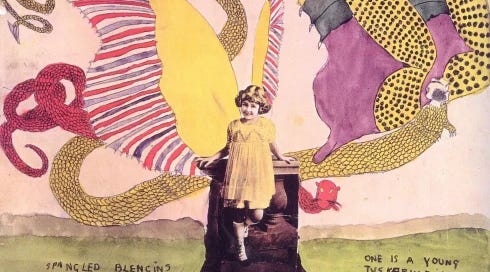



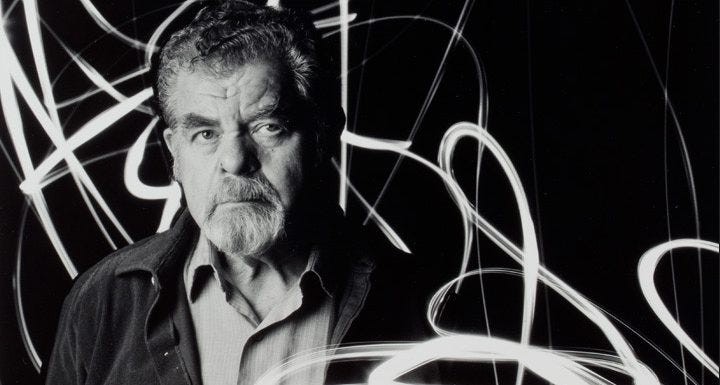




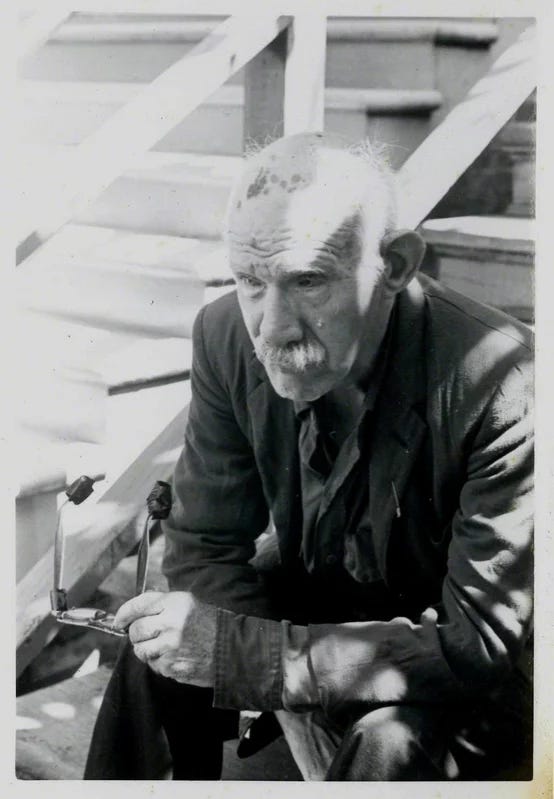
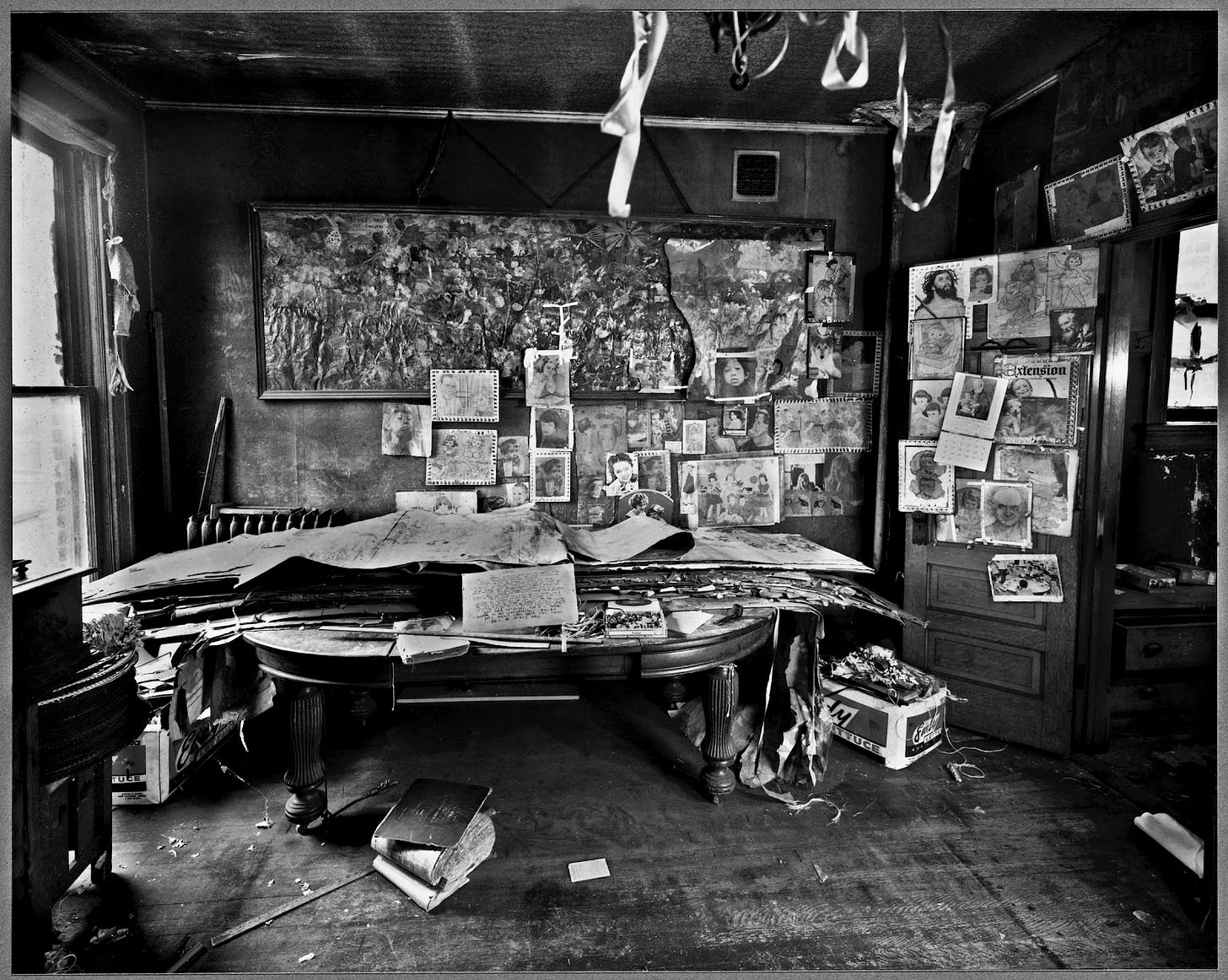

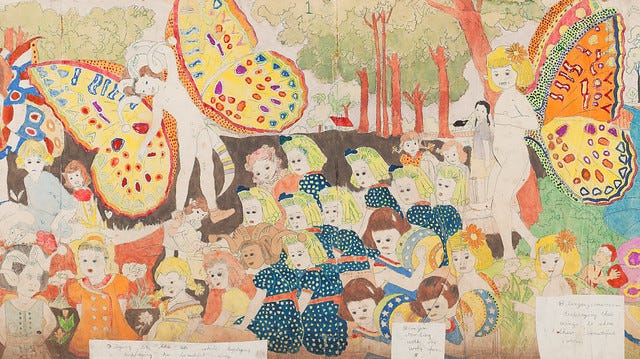
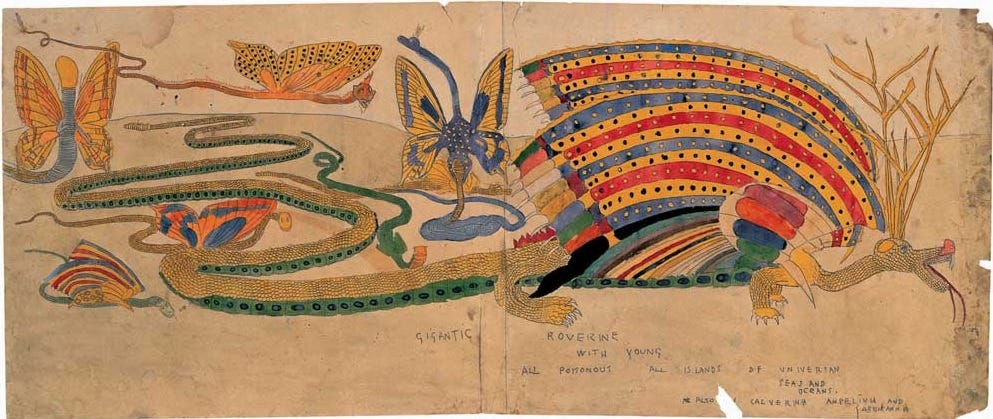

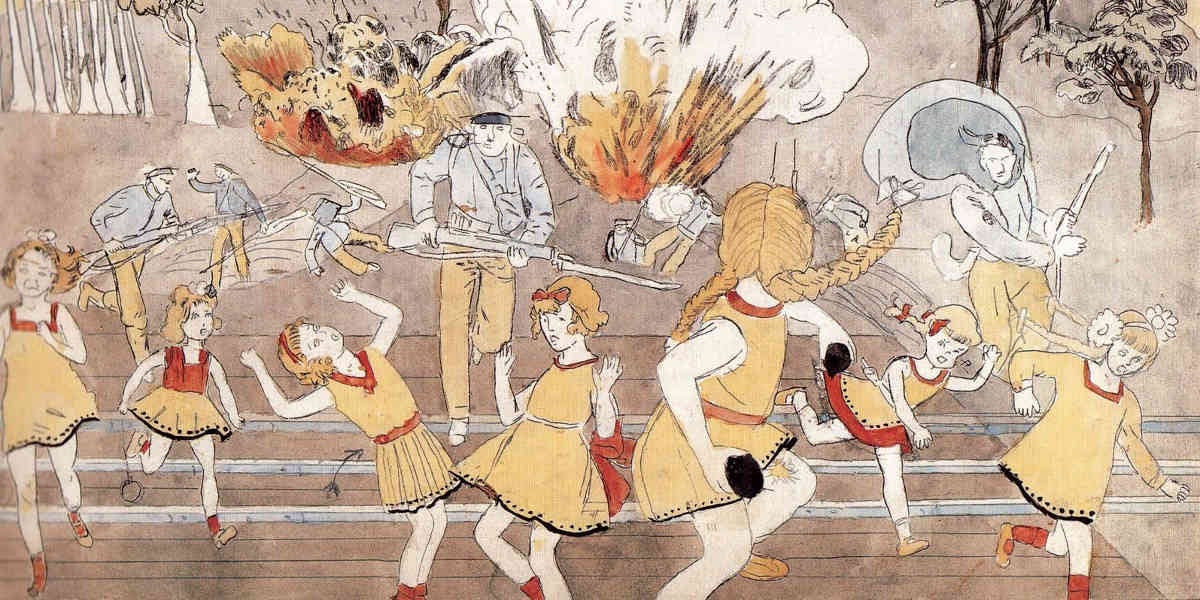

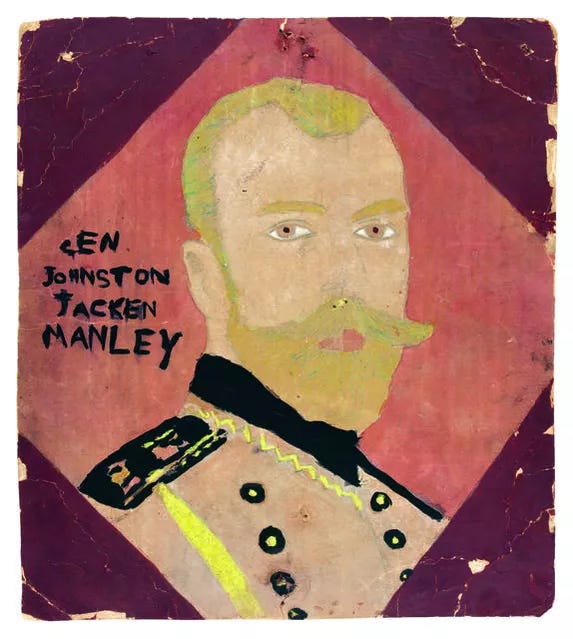

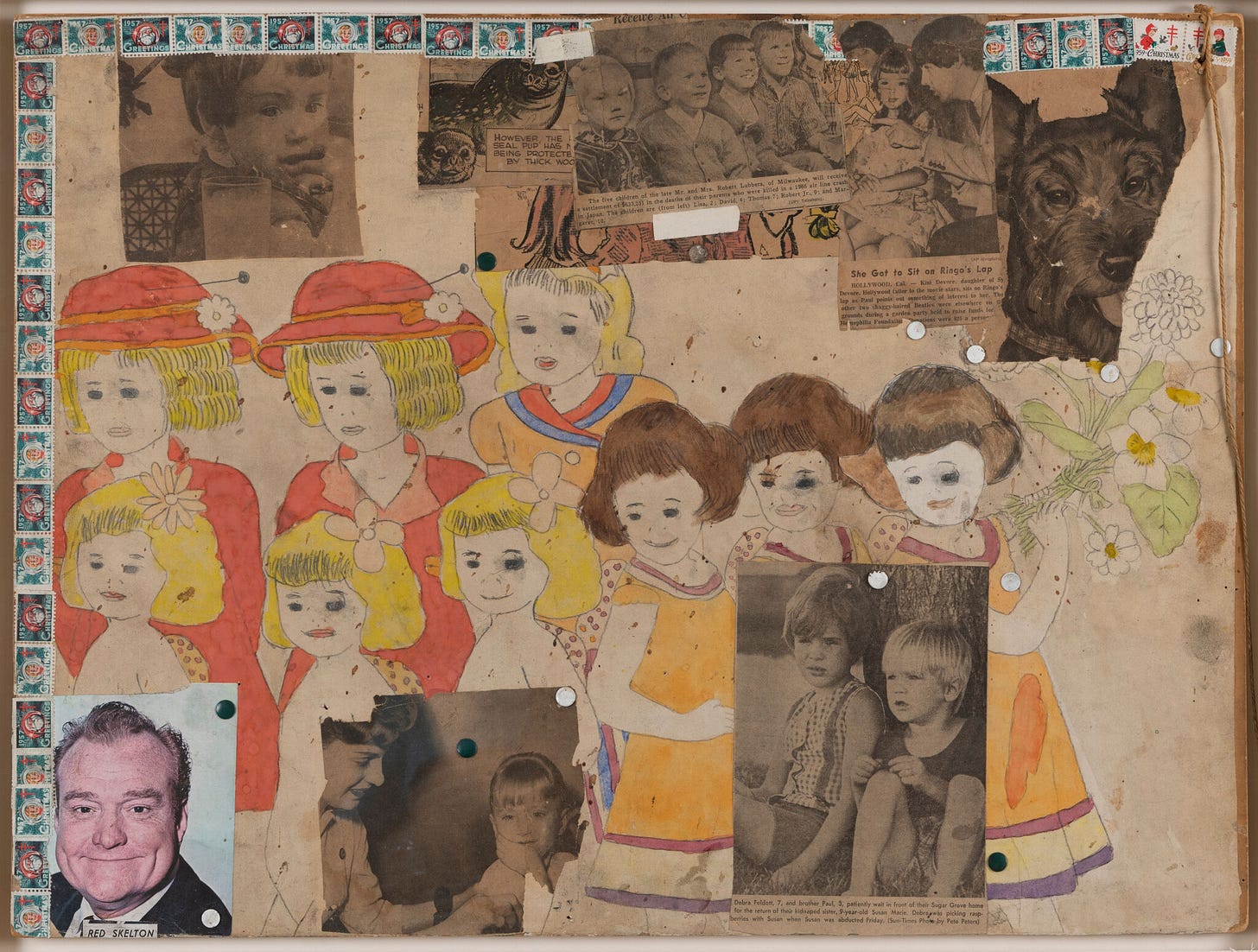
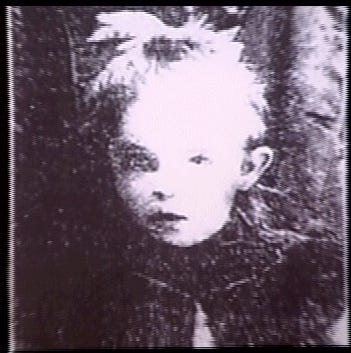

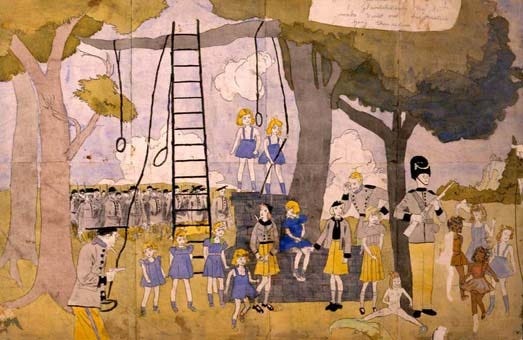
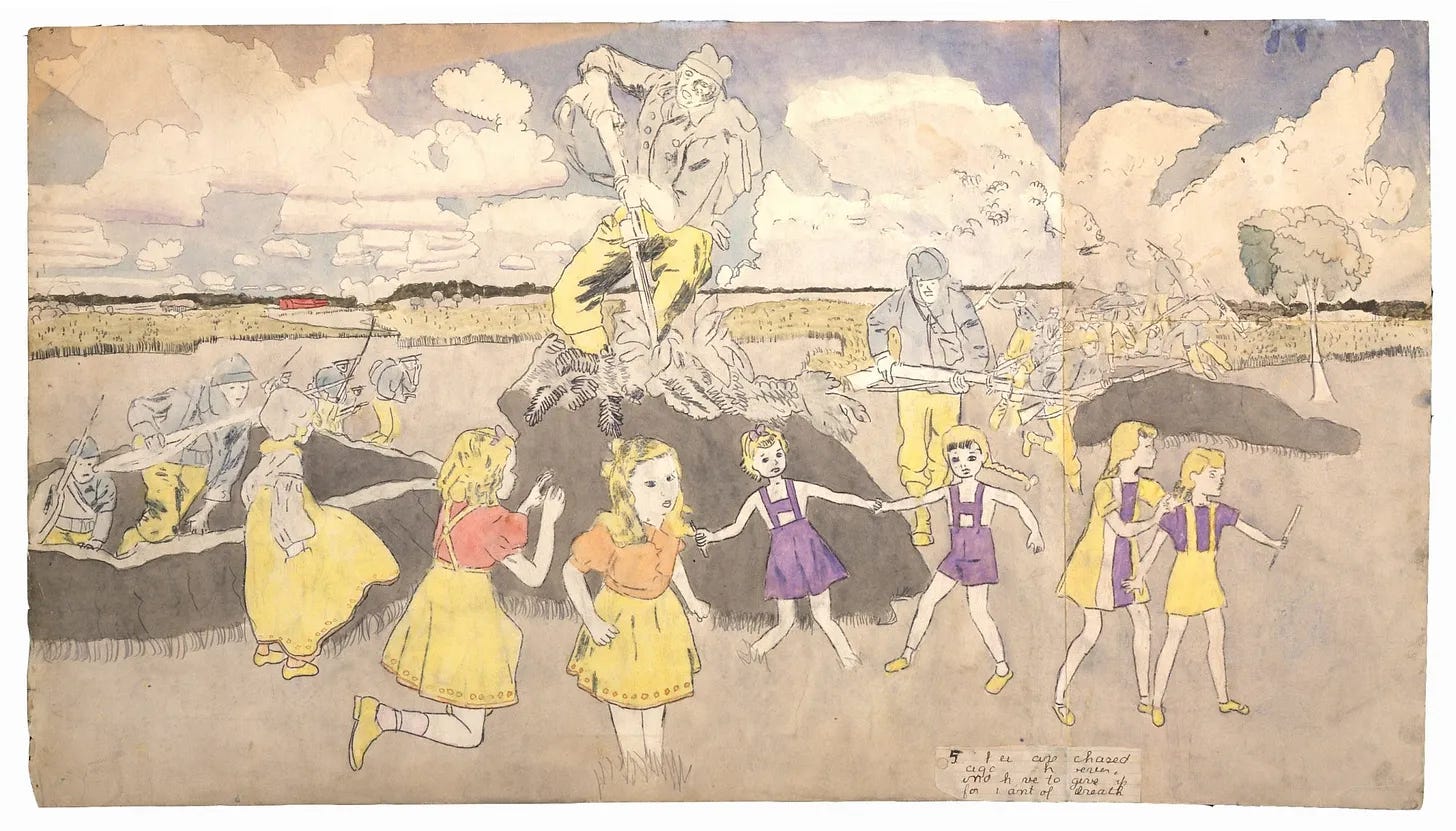
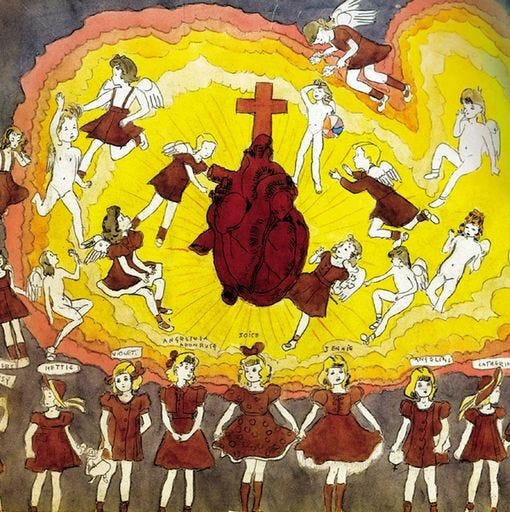
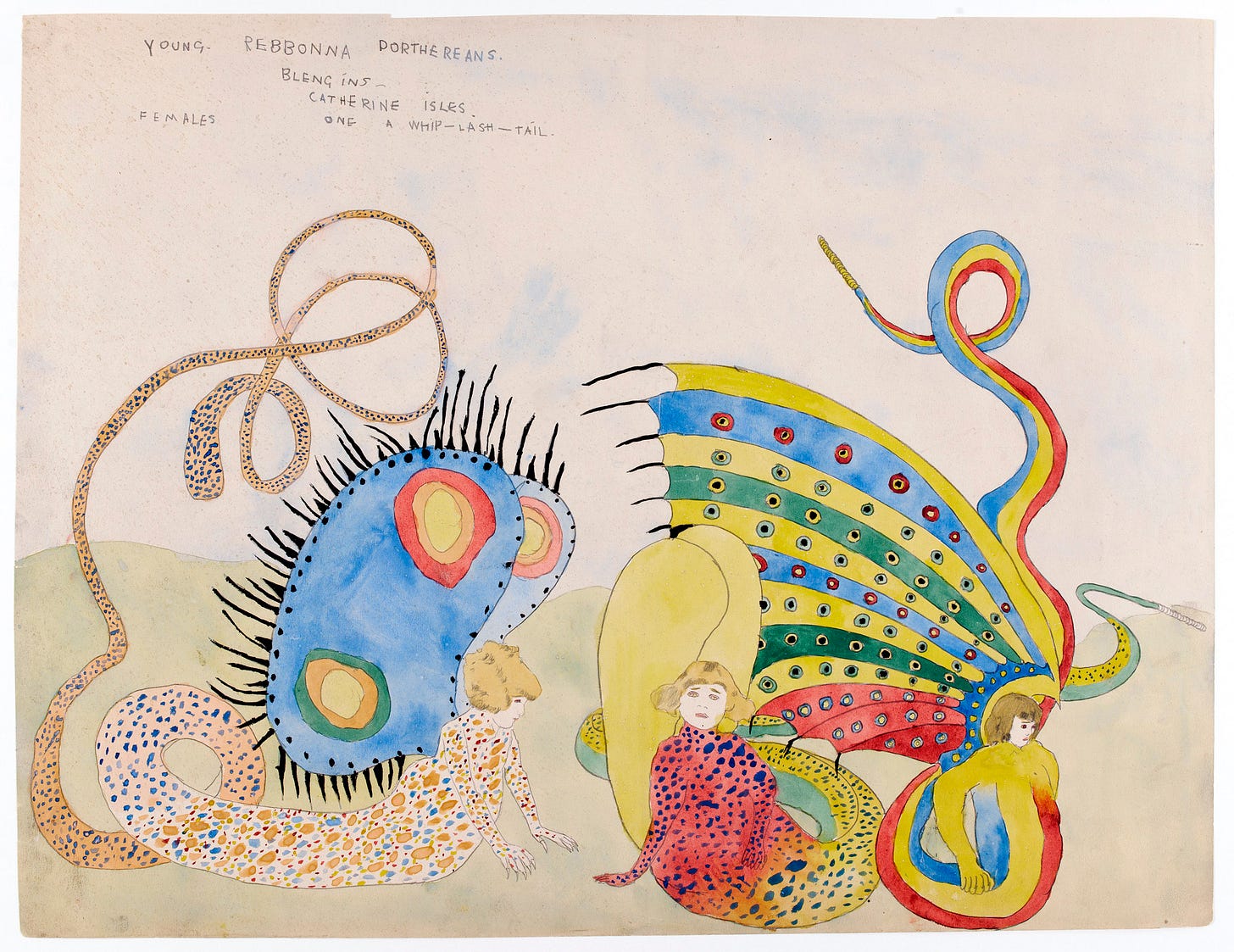

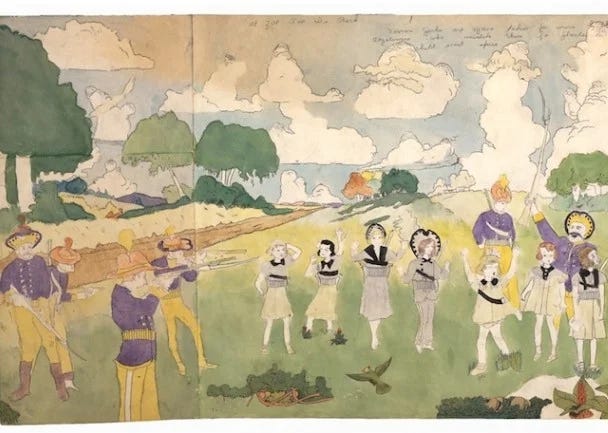
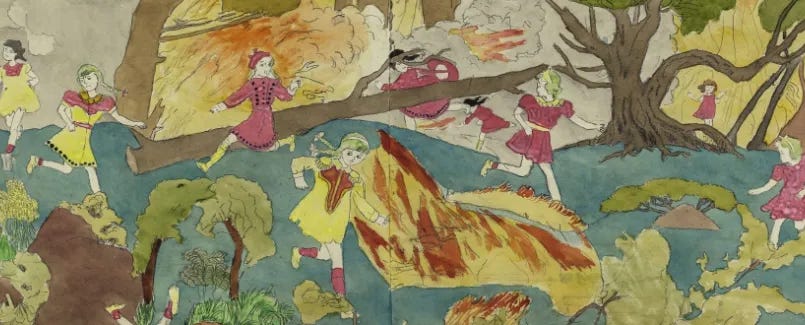



Thanks for this. I'll admit I'd never heard of this guy, but it's quite a tale. I also thought of the parallels to Chris-chan about halfway through, once the illustrations came up, and I was curious if you were headed in the same direction. It's also interesting how Chris-chan's one overriding, tragic (in the classical Greek sense) fault is oversharing, while this guy never shared anything at all. Either way, I could see CC being the subject of academic historians, but his work in galleries? At least I sure hope not. :P I've also seen people claim CC is the most documented individual in history, which is either hilarious or really, really disturbing if true. I can never decide which.
And yes, thought-provoking points on the idea of all those thousands and millions of people making stuff for themselves in their rooms that no one will ever see. I think you're right that every artist should ideally create for him- or herself first, which is another argument for having other sources of income. Or doing what some high-profile actors do by alternating between commercial and passion work, I suppose.
"There’s an honesty to it that can’t be replicated by the Design-By-Committee media made to be consumed by a mass audience churned out by big entertainment conglomerates. And, again - that honesty may not be beautiful. But it is always interesting."
Eh, I don't know. Sometimes, sure. But I also feel these works are often as boring as the committee-designed ones, since they also tend be built 100% out of cliches and pop culture and fandom tropes. So it often boils down to the same thing, just with worse craftsmanship.
Kind of a random note, but it also struck me of Catholicism pops up as a common thread here, all through Darger's life. Every important institution in his life was seemingly part of that church. I guess that makes sense when they were a major denomination in the US at the time, but still. And while we're at it, how does someone attend Mass several times a day? I'll admit I don't know much about the fine details of Catholicism, but I thought it was a daily thing, or even weekly, kind of like Protestant services? Did he just turn up at different churches who had it scheduled at different times throughout the day to go through the same ceremony over and over?
There's many a different breed of creative, some would even scoff at bding called creative, being of a workman-like make, constructing a book or comic as a man might a chair he cares little for. What matters is not what he or the audience feels, but the chair, the book serve its purpose.
Some in a different sense are barely creatives.
Theirs is a tortured scream in words and colours, only God and themselves their audience.
Occasionally something beautiful rather than grotesque is born from these tortured souls, but some like Van Gogh are less a story of a tortured soul as a wounded man given care and love.
Van Gogh's brother kept him well.
A pity that the man of this post was not kept better.
Alas, who will help you when all your cries for help are colours in the dark?
Of course, since you bring up the Infamous Chris.
Sometimes there's a torturer beyond humankind.
Sometimes what would be cries of pain become dark curses.
Sometimes there's more than one voice in an argument people have with themselves.
The fate of many who tortured Chris, should inspire many a pausing thought, but this teller shall give no more spoilers.
Dark and rich are these wells of people.